Why you can trust Tom's Hardware
Asus ROG monitors are typically accurate out of the box, and the PG27AQDP is no exception. Though there is some room for improvement, it can be used without calibration in its Racing and sRGB modes.
Grayscale and Gamma Tracking
Our grayscale and gamma tests use Calman calibration software from Portrait Displays. We describe our grayscale and gamma tests in detail here.
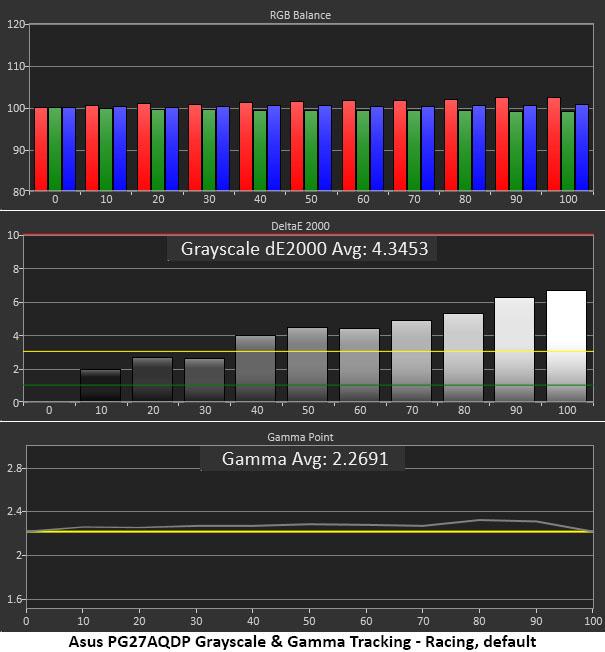
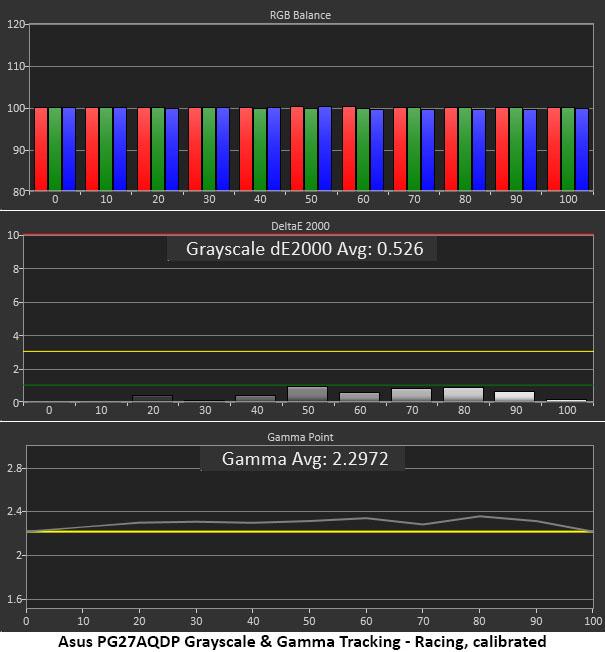
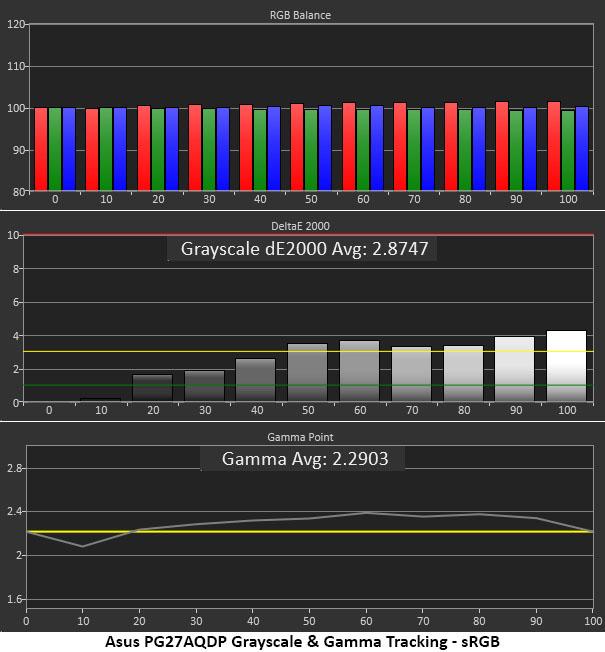
The PG27AQDP’s default grayscale run is a bit warm in tone. Red errors are visible from 40 to 100% brightness. This is forgivable because it’s harder to spot in content than green or blue issues. Gamma runs slightly dark but remains close to the 2.2 reference line throughout.
Calibration removes all visible grayscale errors and delivers pro-level accuracy. Gamma becomes slightly darker, but again, it's close to the reference line at all points, so it doesn’t impact the image in any significant way. If you want lighter gamma, choose the 2.0 preset and it will track around 2.09.
In the sRGB Cal mode, grayscale is very good with a 2.87dE average error. Gamma is a bit wonky though with a dip at 10% (too light) and a general track that’s too dark. The image is a bit less vivid than it could be, but this is still a suitable picture mode for graphics work.
Comparisons
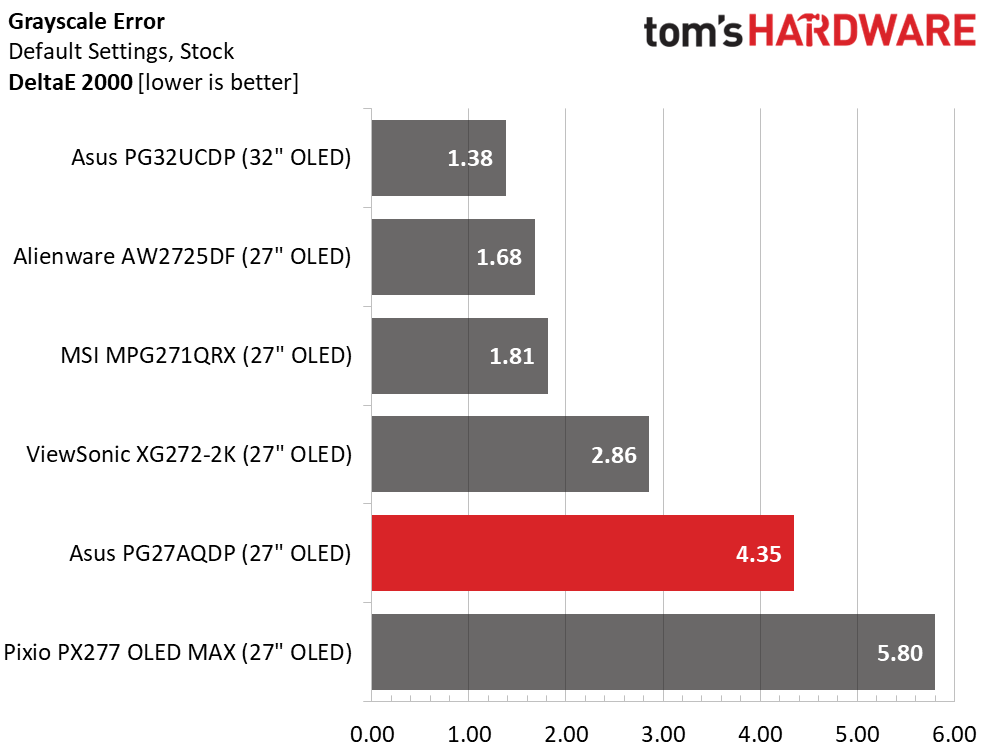
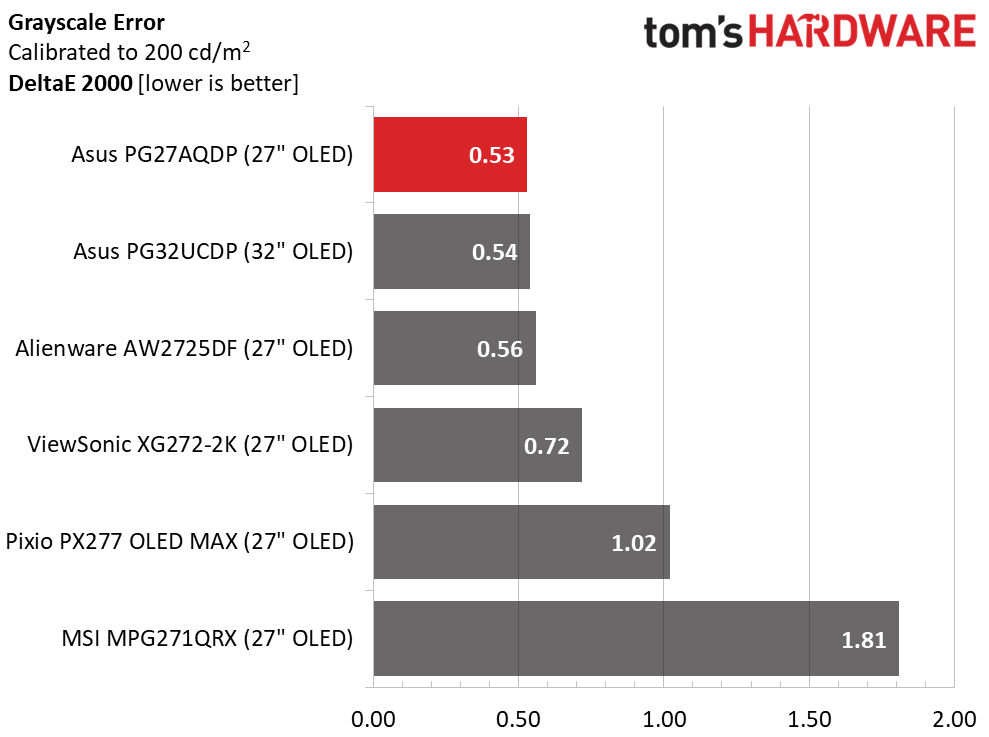
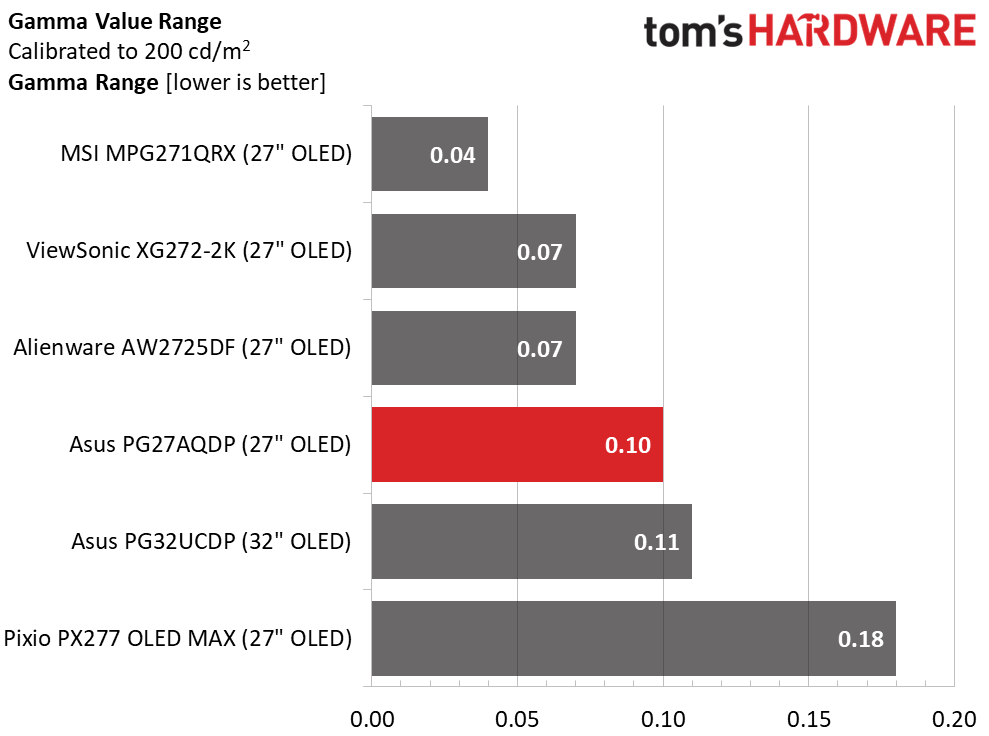

The PG27AQDP’s default 4.35dE grayscale error seems high, but since it’s concentrated in red, it is less visible. Green and blue errors are more obvious to the naked eye. Calibration makes a substantial improvement to 0.53dE, good enough for the top spot.
Gamma tracks with a tight 0.10 range of values but is a tad dark with an actual value of 2.30, a 4.54% deviation from the 2.20 spec.
Get Tom's Hardware's best news and in-depth reviews, straight to your inbox.
Color Gamut Accuracy
Our color gamut and volume testing use Portrait Displays’ Calman software. For details on our color gamut testing and volume calculations, click here.
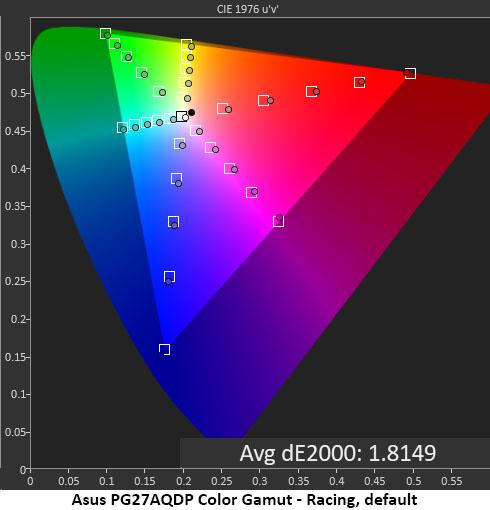
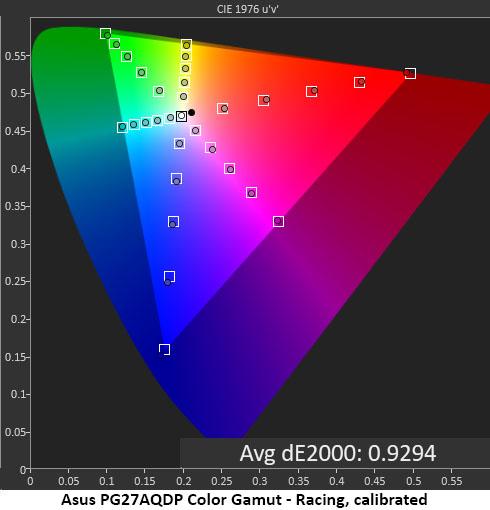
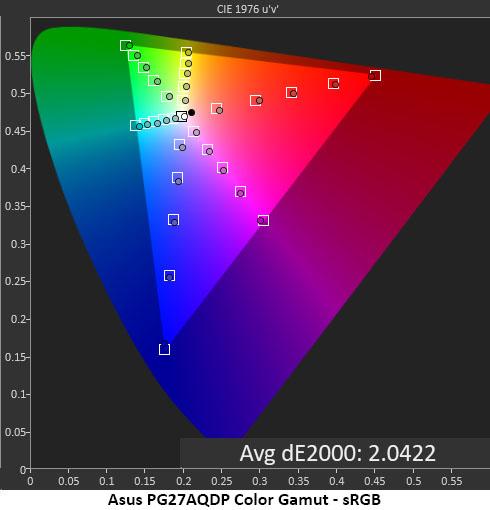
The Racing mode uses the PG27AQDP’s full native color gamut which is visually perfect when referenced to DCI-P3. With a 1.81dE average error, there is nothing to complain about. My grayscale calibration improves the value slightly to 0.93. While that is mathematically impressive, the visual difference is slight. This is excellent performance.
In the sRGB Cal mode, the PG27AQDP hits all the marks with a 2.04dE score. That is good enough for color-critical work. There are no gamma or color temp options here, but they are close enough to spec to make the PG27AQDP usable for color grading and photo editing.
Comparisons
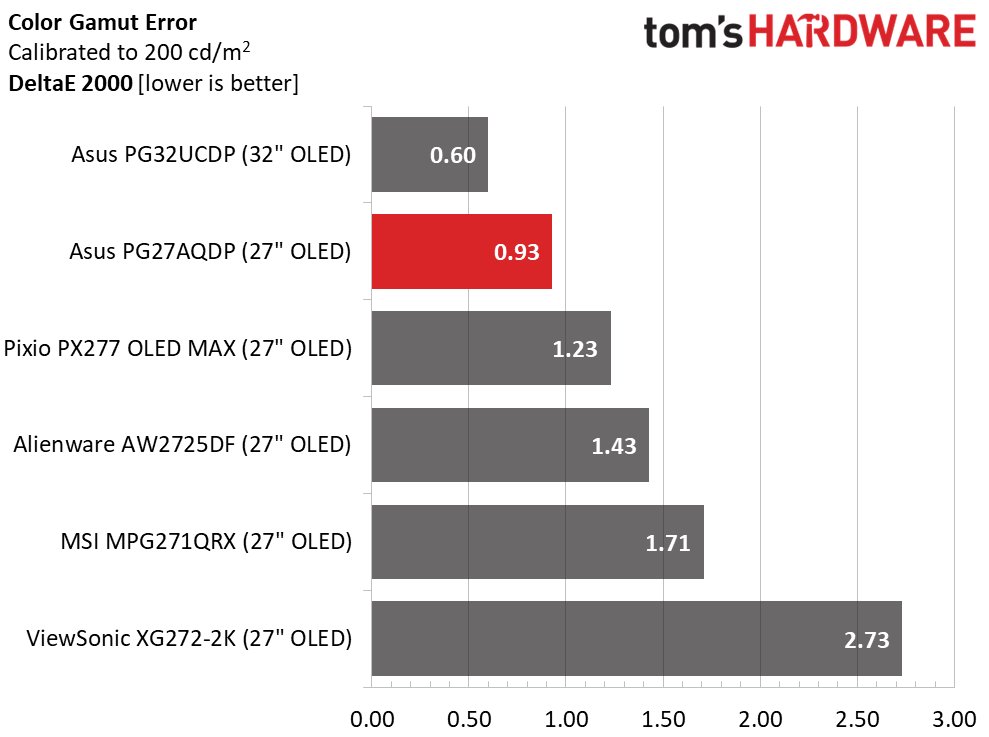
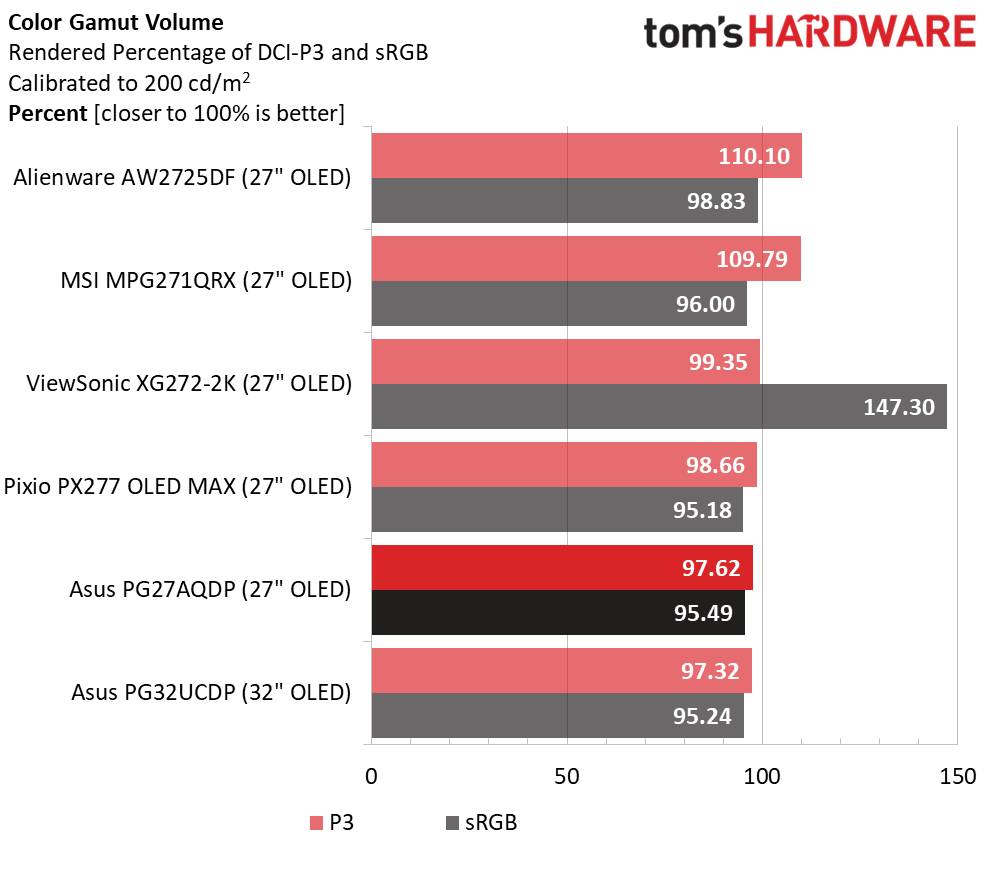
The PG27AQDP’s color error of 0.93dE is firmly in professional territory. Only another premium Asus can do better; witness the PG32UCDP’s 0.60dE result. It doesn’t get much better than that.
In the volume test, you can see that the PG27AQDP does not employ Quantum Dot technology. The top two screens do, and they cover around 110% of DCI-P3. But the visual difference here is small. Any OLED will look more colorful than an LCD unless it too is equipped with a QD layer. The PG27AQDP hits nearly ideal volumes for both DCI-P3 and sRGB.
Test Takeaway: The PG27AQDP has exemplary color accuracy and performance. It’s more colorful than anything short of a Quantum Dot display. It can be used without calibration, but with a few tweaks, it achieves reference level. I have no complaints whatsoever.
MORE: Best Gaming Monitors
MORE: How We Test PC Monitors
MORE: How to Buy a PC Monitor
MORE: How to Choose the Best HDR Monitor
Current page: Grayscale, Gamma and Color
Prev Page Brightness and Contrast Next Page HDR Performance
Christian Eberle is a Contributing Editor for Tom's Hardware US. He's a veteran reviewer of A/V equipment, specializing in monitors. Christian began his obsession with tech when he built his first PC in 1991, a 286 running DOS 3.0 at a blazing 12MHz. In 2006, he undertook training from the Imaging Science Foundation in video calibration and testing and thus started a passion for precise imaging that persists to this day. He is also a professional musician with a degree from the New England Conservatory as a classical bassoonist which he used to good effect as a performer with the West Point Army Band from 1987 to 2013. He enjoys watching movies and listening to high-end audio in his custom-built home theater and can be seen riding trails near his home on a race-ready ICE VTX recumbent trike. Christian enjoys the endless summer in Florida where he lives with his wife and Chihuahua and plays with orchestras around the state.
